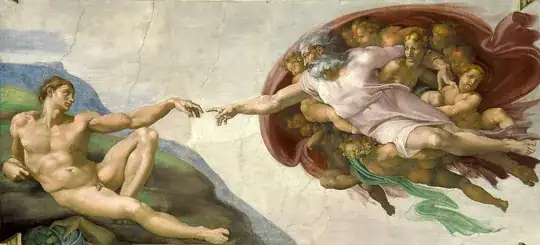I am planning to sell a physical sculpture based on Michelangelo's Creation of Adam. There would be some additional features besides just the sculpture, but those are irrelevant for the purposes of this question. The painting, for those unfamiliar:

The sculpture would be 3d modeled and then 3d printed. To give a sense of what I'm talking about, here's a link to a 3d model that I found.
Unless I can license that particular model, my plan is to pay another artist to create a similar model that I would then have ownership of. But, here comes the problem:
According to this Wikipedia page, "The Holy See owns all copyrights in the works published under its name or created on its commission (art. 5)." Since this painting was commissioned by the Vatican for the Sistine Chapel, they own the copyright to it. So, I have several questions:
- In general, if a painting is copyrighted, can a sculpture be created based on that painting without violating the painting's copyright?
- If not, would the religious nature of the scene be a good legal defense? I.e. this sculpture was inspired by the story of God creating man (not copyrighted), rather than inspired by a specific painting of God creating man (copyrighted).
- If I do somehow violate copyright, how likely is it that the Vatican would actually sue? How far does their jurisdiction extend?
- If I commission another artist to create a sculpture based on the painting, could I be violating the copyright of the artist who has already created a sculpture based on the painting?
If it matters, I am based in the US, though I would ideally like to be able to sell outside of the US. Any advice would be appreciated. Thank you!